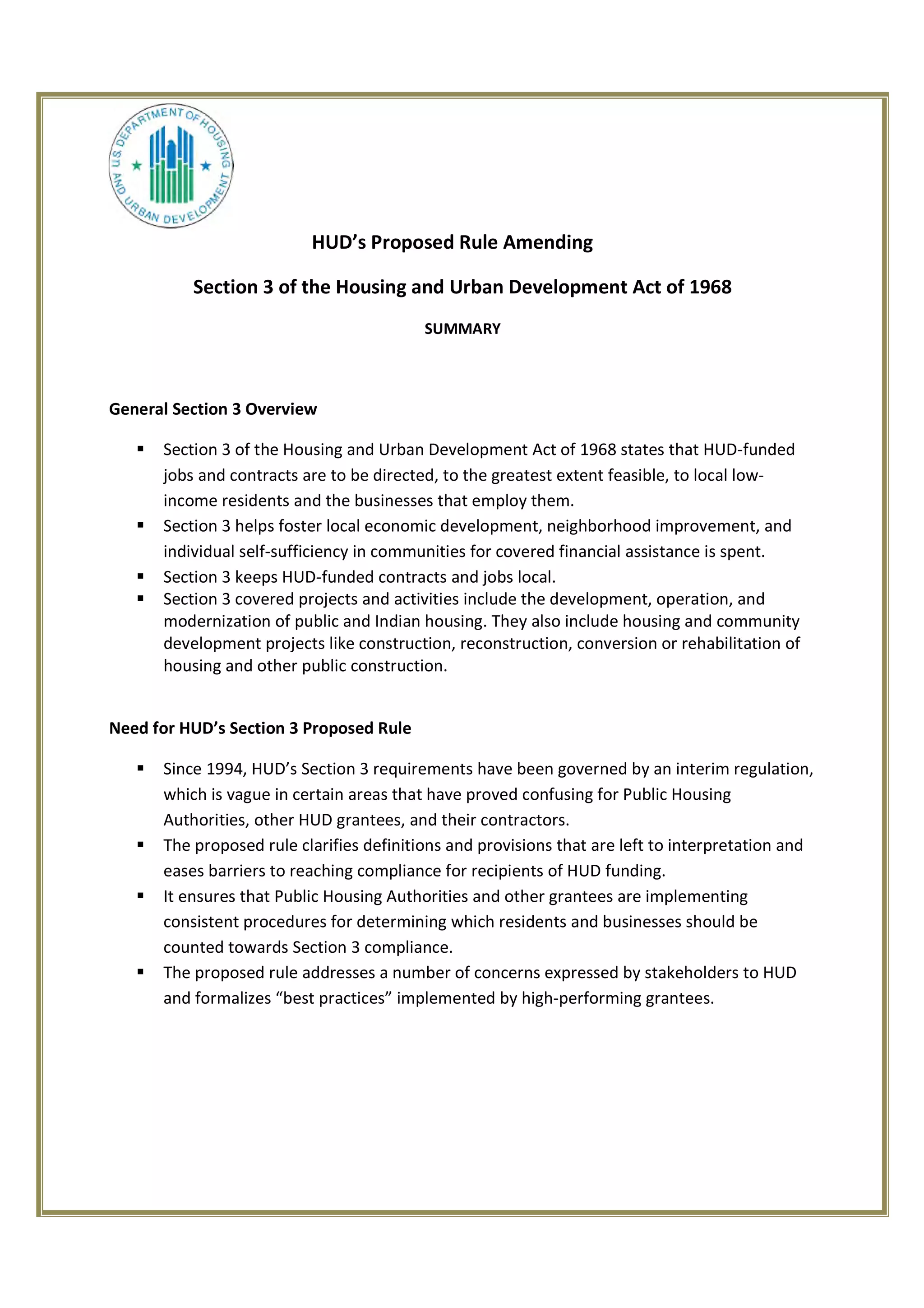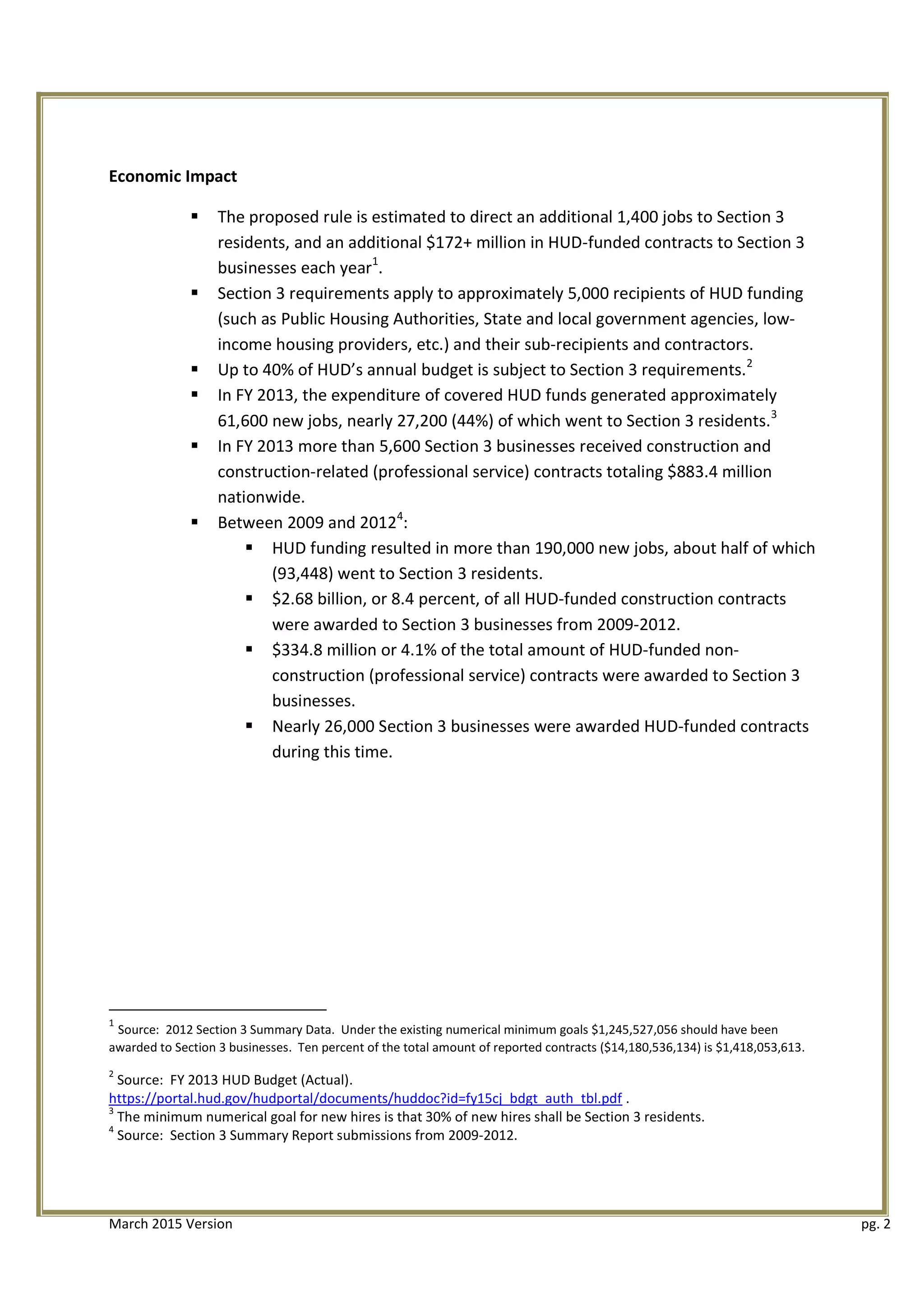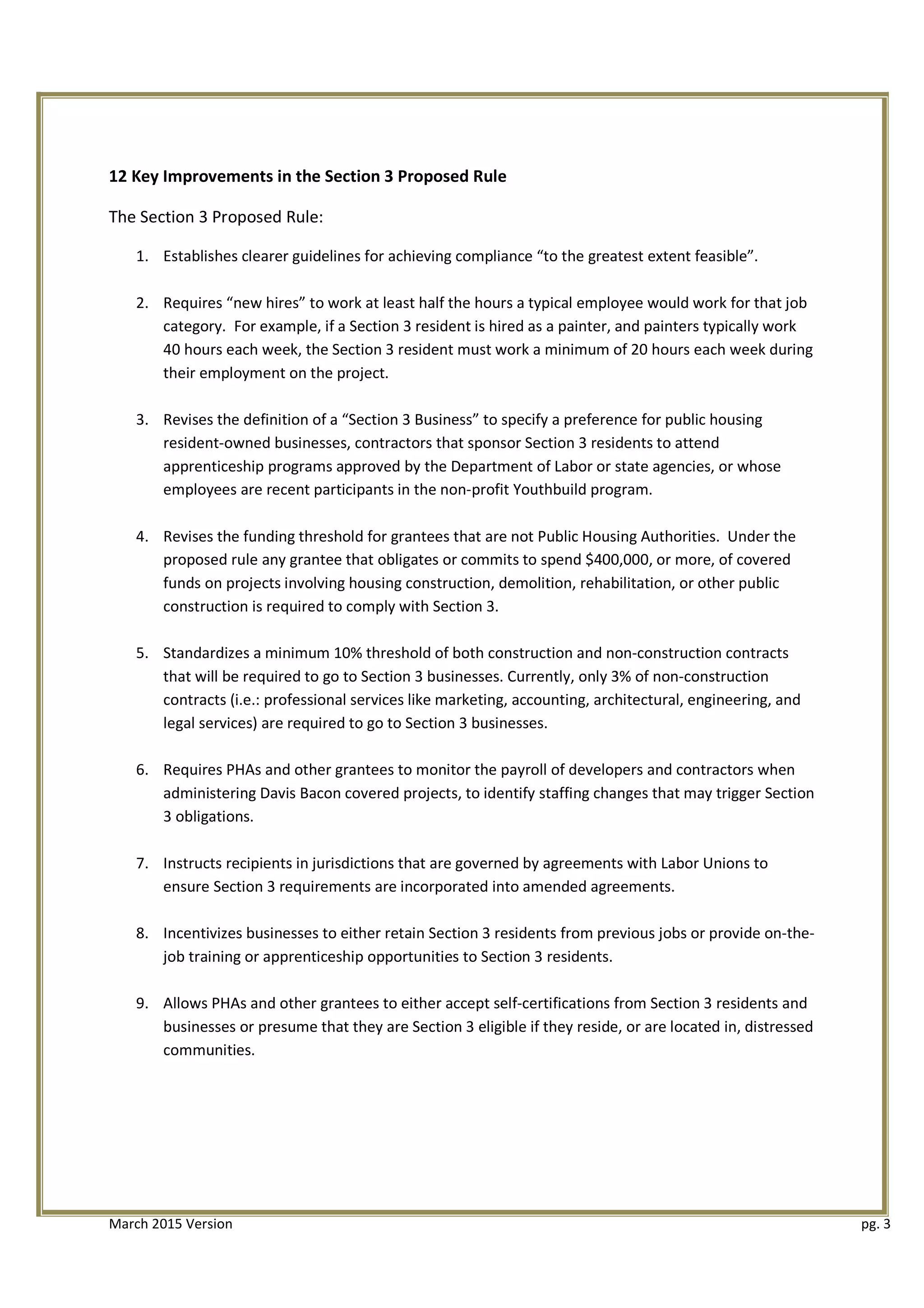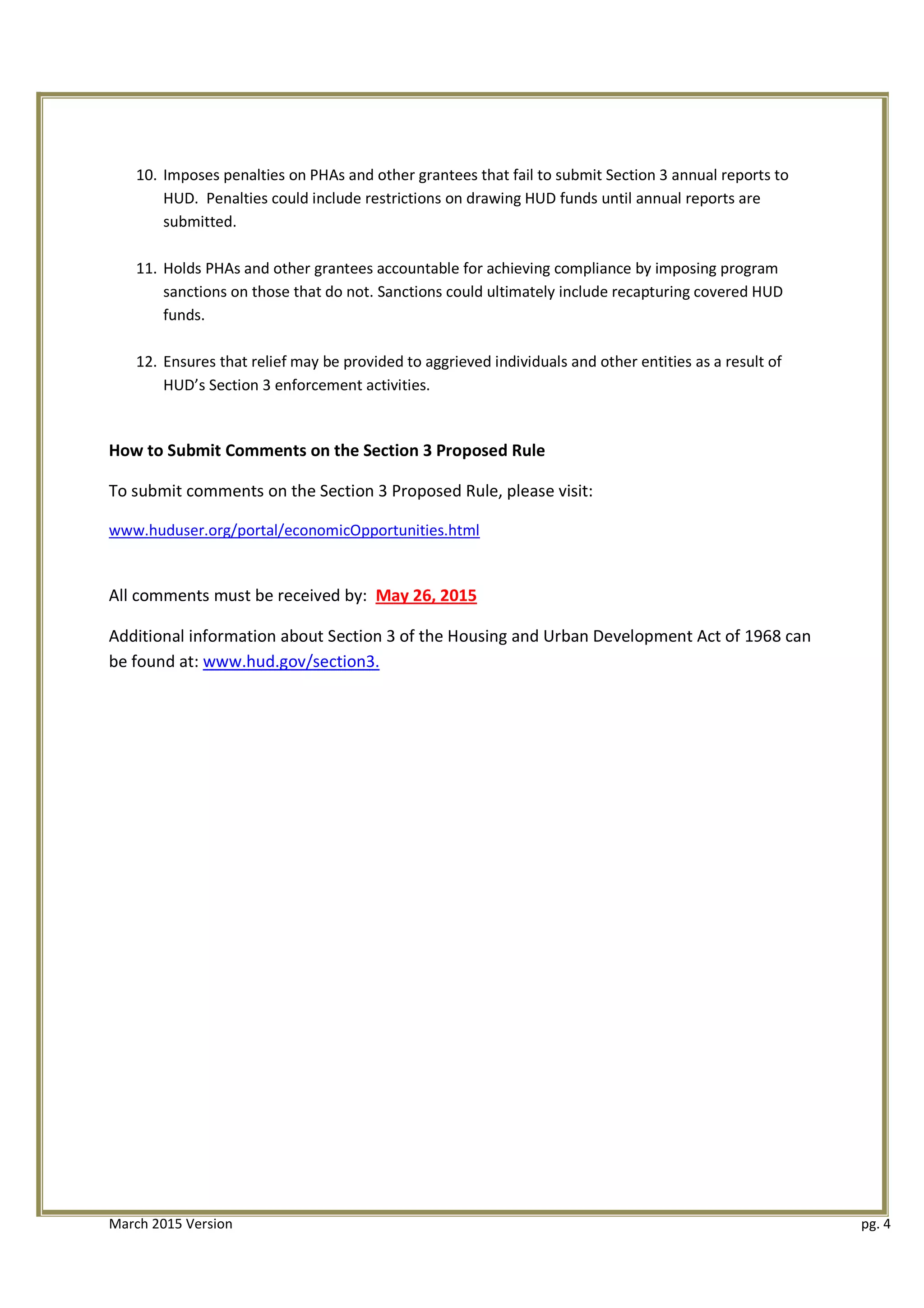The proposed rule by HUD aims to strengthen and clarify Section 3 of the Housing and Urban Development Act of 1968, which requires that employment and other economic opportunities generated by certain HUD financial assistance shall be directed to low- and very low-income persons, particularly those who are recipients of government assistance for housing. The proposed rule provides clearer guidelines for compliance, standardizes requirements, increases accountability, and is estimated to result in over 1,400 additional jobs and $172 million more in contracts directed to low-income residents and businesses each year. Public comments on the proposed rule are being accepted through May 26, 2015.



